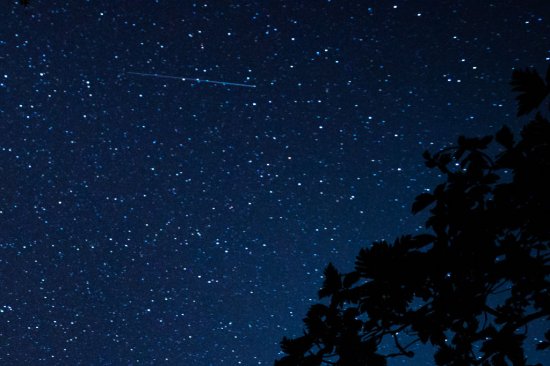
Everything to know about the Perseid meteor shower and how to watch it, with the peak coming on August 12.
The best time to watch what many call the best meteor shower of the year is coming up.
The Perseid meteor shower has already begun, but the peak time to watch it in the U.S. is the night of Aug. 11-12, says Alex Filippenko, a distinguished professor of astronomy at the University of California, Berkeley. That’s when stargazers will be able to see the most meteors.
“It’s a fun event,” says Filippenko. “I do encourage (people) to watch it because they are more likely to see meteors than on a random night.”
[time-brightcove not-tgx=”true”]Here’s everything you need to know about the Perseid meteor shower and how to watch it.
What is the Perseid meteor shower?
Meteors are mostly little bits of rock that travel quickly through the Earth’s atmosphere and burn up because of the friction, causing the streaks in the sky that are commonly known as “shooting stars” or “falling stars,” Filippenko says. On any given night, people might be able to see a few meteors each hour. But during a meteor shower, people can see many more.
The Perseid meteor shower occurs around the same time each year, when Earth passes through the debris of a comet called Swift-Tuttle. Whenever a comet goes around the Sun, it partially disintegrates, leaving behind debris. As Earth passes through the debris left over from Comet Swift-Tuttle, pieces of that debris enter the planet’s atmosphere, creating this meteor shower. (But don’t worry—these meteors generally don’t land on Earth because the debris burns up in the atmosphere, Filippenko says: “There’s no danger whatsoever during a meteor shower.”)
Read More: What We Lose When We Can’t Stargaze
The Perseid meteor shower is considered to be the best of the year because it’s one of the most plentiful showers—typically, people may see about 20-30 meteors per hour, which comes out to a meteor every 2-3 minutes, Filippenko says. In totally perfect conditions, people might see more than 100 meteors an hour, but that’s “highly unusual,” he adds.
Why is it called ‘Perseid’?
The event gets its name from the constellation Perseus because these meteors appear to come from the direction in the sky where the constellation is located. But the meteors aren’t coming from the constellation—those stars are lightyears away, whereas the meteors that we see during the event are in our own solar system.
When will it happen?
The Perseid meteor shower typically starts in mid-July, but it’s hardly noticeable then. The peak occurs when Earth goes through the main clump of debris. This year, experts predict that will be at 10 a.m. ET on Aug. 12—during daylight hours, when people won’t be able to see the meteors. But viewers will still be able to see numerous meteors after midnight in any time zone in the U.S. on Aug. 11 into Aug. 12, Filippenko says, with 3-4 a.m. likely to be the best time. Even if people choose to watch it after midnight Aug. 12 into Aug. 13, they will likely still see meteors.
“The shower still has a pretty good rate even away from the peak,” Filippenko says. “It’s just that to optimize their chances of success, people should view as close to the peak as possible, without it being daytime or bright twilight.”
How can you watch it?
The best way to watch the meteor shower is with your eyes—there’s no need for a telescope or binoculars, Filippenko says. It helps to be looking at a really dark sky, so get away from city lights by going to the suburbs or the countryside, and watch the sky after midnight.
You could look anywhere in the sky to spot meteors (looking away from the Moon is best), but depending on where you’re looking, you could see different types of streaks. Filippenko says that it can be helpful—and entertaining—to watch the shower in a group so each person can keep an eye on a different part of the sky.
“In general, views to the northeast—that’s towards Perseus over most of the night—will provide a greater number of streaks, but they will be shorter,” Filippenko says. “If you look elsewhere in the sky, you’ll perhaps get fewer streaks, fewer meteors, but they will be longer.”
It’s important to give yourself enough time to let your eyes adapt to the dark. It usually takes about 15 minutes, and make sure to turn your flashlights off and avoid bright lights. Filippenko recommends spending at least half an hour outside to watch the event. He also cautions people not to expect to see meteors “raining down upon them”—the word “shower” is misleading. “Just have some patience,” Filippenko says.